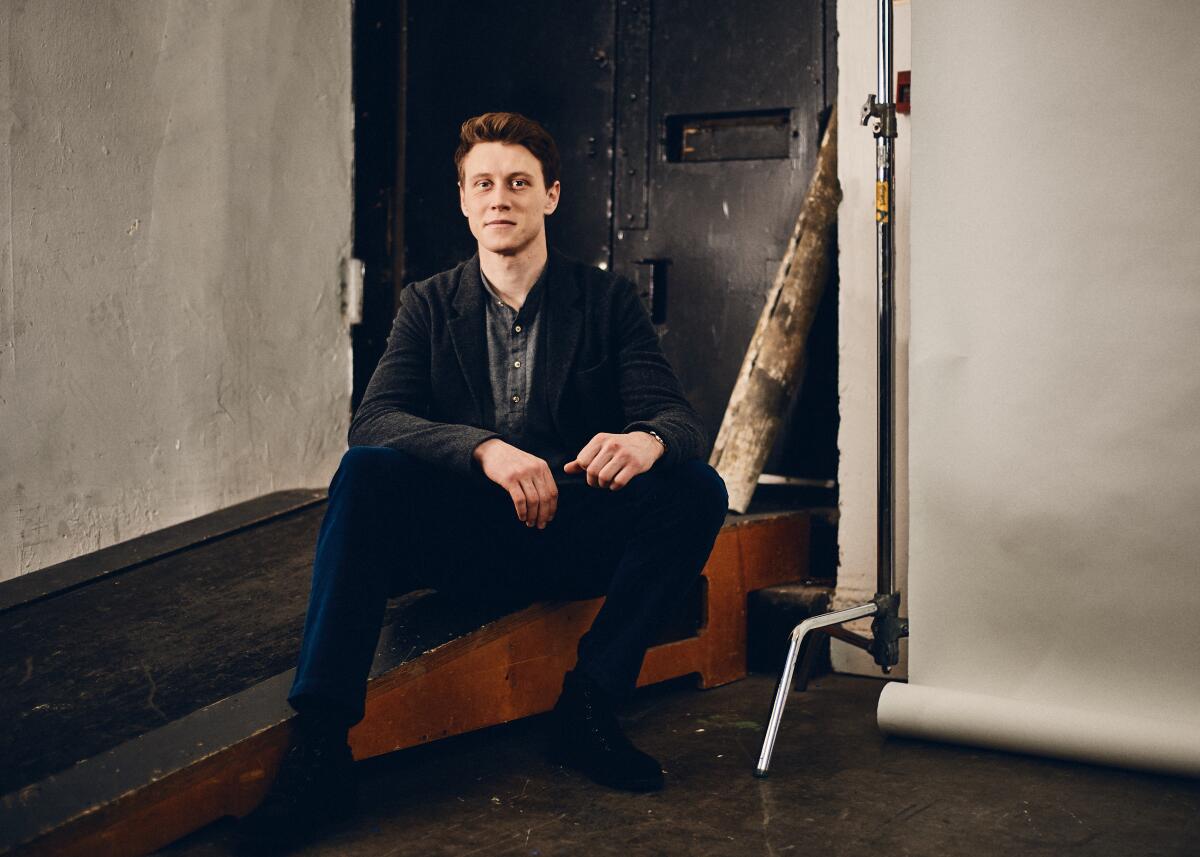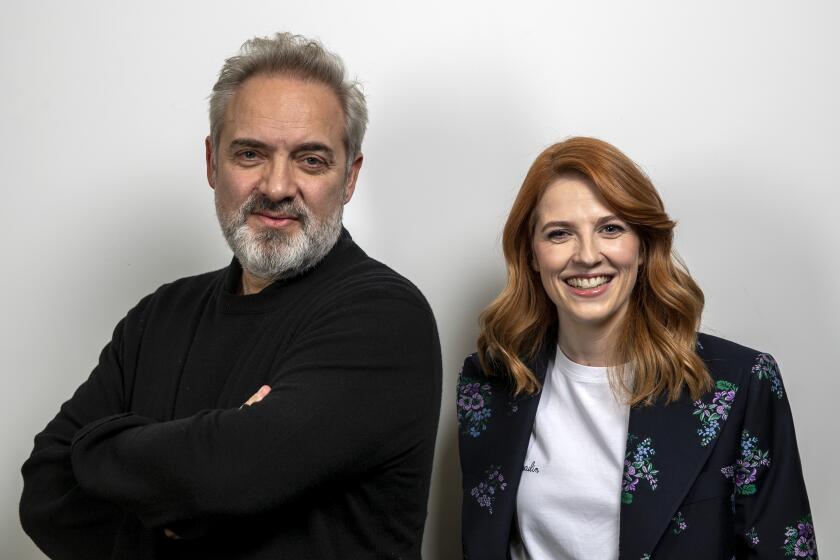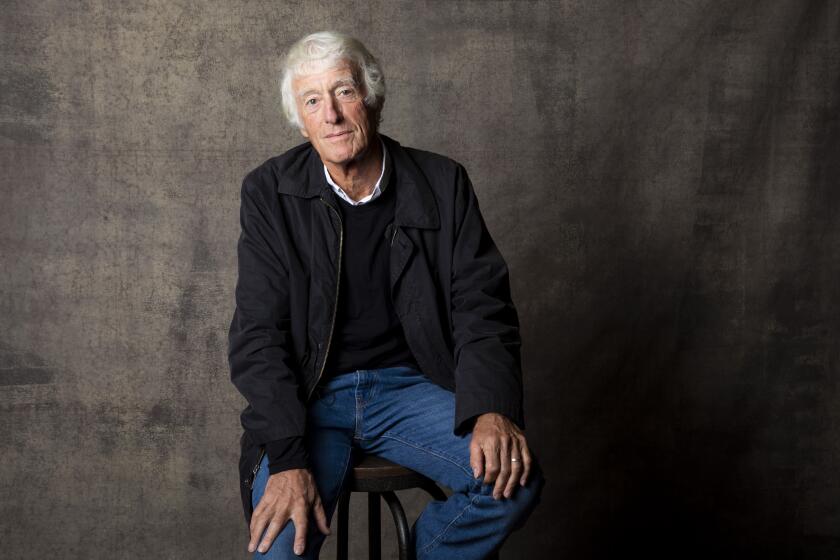Why George MacKay could identify with his ‘1917’ soldier character

- Share via
London — Even before reading the script for “1917,” George MacKay felt connected to the character of Lance Cpl. Schofield. MacKay had just spent several months in Australia filming “True History of the Kelly Gang,” where he’d felt so homesick that he had to disconnect himself from his loved ones and just focus on the work. The actor was given two scenes for his “1917” audition and he knew immediately how a young British soldier might have felt during World War I when faced with a seemingly impossible task.
“I was physically and emotionally really exhausted by the end of [shooting],” MacKay says of his time filming in Australia. “That’s why I think when I read the scenes I got Schofield. He didn’t want to talk about home. Like, ‘If I go I’m going to break and I don’t think I can pull myself back together again. Let me just get through this and I’ll deal with that after.’ That experience really informed the doing of ‘1917.’”
He adds, “When I got those scenes I remember thinking, ‘I know what interpretation to give. I feel like I know this man.’ You don’t always have that. I felt like I knew him quite well even without the context of the story.”
Oscar winner Sam Mendes and co-writer (and “history nerd”) Krysty Wilson-Cairns got into the trenches for “1917,” an immersive World War I quest movie.
To prepare for “1917,” which director Sam Mendes and cinematographer Roger Deakins shot to appear as one single take, MacKay and his costar, Dean-Charles Chapman, rehearsed for nearly six months, both on a soundstage and on the actual locations. They did each scene dozens — maybe even hundreds — of times, blocking out the action with precision so the cameras could follow them and move around them. Some of the takes were as long as 10 minutes, which meant that every person involved had to know exactly what they were doing.
The World War I film ‘1917’ presents its action in seeming real time, with the fluid camera movements always connecting to the characters on a mission
“It becomes in your muscle memory,” MacKay remembers. “That way of doing it so many times it’s so in your bones that you’re not thinking about it. You just know it’s there and therefore it allows you to be much more present in the scene. You’re not reaching for a line. You don’t feel like you’re doing a bunch of things at once.... And it was a mutual dance with the camera. The camera had a similar muscle memory. It was this constant dance.”
He also felt immersed in the process in a new way because every department had to work so closely. “There was never a lead element,” the actor notes. “Everyone had to work together for it to work. That awareness of everyone’s job is like nothing I’ve seen on a film. I learned so much about everyone else’s jobs. Everyone was there together and the only great thing was the story.”
To prepare physically, MacKay and Chapman took on military training, learning how to use the historic gear and doing army drills. They practiced moving together in formation, which helped as the two soldiers journey through enemy territory to deliver an important message. But the emotional preparation was almost more significant.
MacKay visited war memorials and battlefields in Belgium and France, and did research at the Imperial War Museum in London. He looked at the painters of the time and read “Poets of the Great War,”an anthology of 25 poets, almost daily on set. He also created a vast back story for Schofield, even though we get only glimpses of his life outside the battlefield during the film.
“I felt like I needed to build his background,” MacKay, 27, says. “That’s something we talked about with Sam, but was mainly left for Dean and I to do ourselves. You meet [these characters] on the move and you get bits what makes up these men and what home means to them. And then it’s almost like there’s a hidden story underneath it about missing home. For me, the work I felt I needed to do when we were rehearsing, was to know what his home was, where he’s from, who his family is, all of that stuff. The more we started to do it, the more Dean and I became those characters.”
The film was as challenging as you’d assume in watching it, but MacKay says he thrives on that sort of effort. He’s looking for projects and directors who put him through the wringer and allow him to come out the other side changed. It was true of both “1917” and “True History of the Kelly Gang,” which features MacKay as outlaw Ned Kelly. That film arrives in the U.S. April 24 after a February 2020 release in the U.K.
“It feels really good to be worked hard,” MacKay reflects. “Lots of really good things take effort. This was rigorous. But it felt great. We had the best time. It was so exciting. And when you got a shot there was, to an extent, a celebration. It was an achievement. I’m learning it more and more, that experiences, in whatever way they push you, you learn so much from them. That’s the way I like to work. Both those films became everything while I was making them and it was a joy to be able to throw myself into them.”

“1917” is an immersive World War I adventure directed by Sam Mendes and starring George MacKay.
More to Read
Only good movies
Get the Indie Focus newsletter, Mark Olsen's weekly guide to the world of cinema.
You may occasionally receive promotional content from the Los Angeles Times.












